The prototype. The SDP45 was a passenger version of the EMD SD45. Both locomotives used a 3,600 hp 645E3 diesel engine. The SDP45 was about 5 feet longer to accommodate a steam generator at the end of the long hood.
Only 52 SDP45s were built between 1967 and 1970. The three original customers were Great Northern (8 units), Southern Pacific (10 units), and Erie Lackawanna (34 units). The GN and the SP used the SDP45s to replace aging E units on passenger trains. The SDP45s on the EL were freight-only versions without steam generators or the split water and fuel tank. Instead, the EL took advantage of the SDP45’s large frame to hold a 5,000-gallon fuel tank.
Many SDP45s continued to work freight and passenger service through the 1970s and 1980s. After long-distance passenger service ended on the SP, the railroad used its SDP45s for commuter service and leased some to Amtrak for the Coast Starlight. Some of the GN units were repainted and converted for freight service after the Burlington Northern merger. The EL SDP45s wore Conrail blue at the end of their careers.
The model. The Athearn model’s dimensions match official EMD builder’s drawings. For this review I evaluated models detailed for Erie Lackawanna no. 3650, Great Northern no. 331, and Southern Pacific no. 3202. All the models are accurately detailed for their particular prototypes.
Built for passenger service, the GN and SP models have long hoods with square ends and steam generator stacks. These models also have two extra access doors on the sides of the long hoods.
Erie Lackawanna used its SDP45s to haul United Parcel Service trains from New Jersey to Chicago. As accurately modeled on the Athearn locomotive, the end of the long hood is tapered. Because of all the tunnels on its route, EL also requested low-profile vents, fan housings, and the Leslie SU-3L-R horn placed on a low-clearance bracket.
Athearn did a great job capturing the smallest prototype-specific details. Even the number of m.u. hoses is correct (3 per cluster on the EL and SP, 4 per cluster on the GN).
There are many other standout details on these models, including glazing in all the cab windows, separate windshield wipers, and a detailed cab interior
(although there aren’t any figures). Scale-profile handrails and sand lines are made of flexible acetal plastic. Separately applied dynamic brake and radiator fans feature see-through grates, and all the wire grab irons are factory installed.
All the models are accurately painted and match prototype photos. Warning stencils and builder’s plate graphics are all in their correct locations. The SP model correctly includes a white dot above the locomotive number to indicate a turbocharged unit.
The motor and flywheels sit in the center of a die-cast metal frame. The DCC decoder is mounted on top of the motor. A round speaker is mounted vertically at the rear end of the frame.
The heavy frame and all-wheel drive give the model a lot of pulling power. The SDP45 should have no trouble handling HO freight or passenger assignments. During our hill climb test, the heavy hauler pulled a 17-car freight train up a 3 percent grade. On level track, it can handle 48 HO freight cars.
DCC operation. The SoundTraxx decoder lets the modeler fine tune motor and sound functions. The SDP45 includes a printed list of the decoder’s programmable configuration variables (CVs). An extensive manual is available as a free download at www.soundtraxx.com.
As I set the SDP45 on our DCC-equipped layout, I heard the growl of the 645 prime mover and the distinctive whine of the engine’s turbocharger. I appreciated that the SoundTraxx decoder can be programmed for manual notching, so I could control the engine rpm independently from the speed, as on a full-size locomotive.
Other user-controlled functions include the bell, long and short horn blast, and coupler crash. Function 9 triggers a brake sound that can also be programmed to function as a brake. This effect is helpful when the locomotive is programmed with a lot of momentum.
In addition to the overall volume, the volume of each individual sound effect can be adjusted. The default horn sound is the correct Leslie RS3L, although there are six other horns to choose from.
DC operation. As the speed charts at right show, the model accelerated smoothly in DC. Like other DCC sound equipped models, the SDP45 required a lot of track power, 8 volts, to get moving.
The dual-mode decoder produces sound effects when the SDP45 is run on a DC layout. The engine rpm increased with the locomotive speed as I advanced the throttle. A quick increase in the throttle setting triggers a grade-crossing horn signal and a quick decrease triggers squealing brakes. At speeds less than 20 scale mph, the bell rings.
The decoder features a few CVs that allow the user to fine-tune DC operation, including the analog starting voltage (CV63) and analog maximum voltage (CV64). Lighting and sound functions can also be enabled automatically using CVs 13 and 14. However, programming the decoder requires a DCC system or DC programmer, such as the Model Rectifier Corp. Tech 6.
Superdetailed out of the box, the Athearn SDP45s would look and sound great in passenger service on the SP, hauling the last of GN varnish, or taking the point on a hotshot EL intermodal run.
Manufacturer
Athearn Trains
1600 Forbes Way, Ste. 120
Long Beach, CA 90810
www.athearn.com
Era: 1967 to mid-1990s (1967 to mid-1970s as detailed for Southern Pacific no. 3202; 1967 to 1970 for Great Northern no. 331; 1969 to 1976 for Erie Lackawanna no. 3650)
Road names (multiple road numbers): Erie Lackawanna (gray/maroon), Burlington Northern, Conrail, EL no. 3638 (Bicentennial scheme), Great Northern, Southern Pacific, and VMV Leasing
Features
- All-wheel drive and electrical pickup
- Constant incandescent
- bulb lighting
- DCC socket with 8- and 9-pin connectors (DC version)
- Die-cast metal frame
- Five-pole skew-wound motor with dual brass flywheels
- McHenry plastic knuckle couplers at the correct height
- Minimum radius: 18″ (22″
- or greater recommended)
- RP-25 contour metal wheels in gauge
- SoundTraxx dual-mode DCC decoder (DCC version only)
- Weight: 1 pound 4.3 ounces





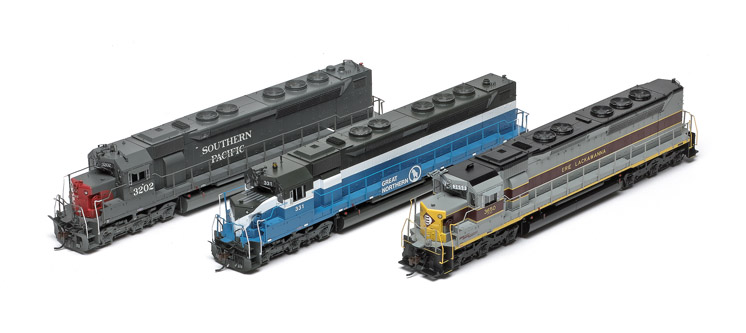
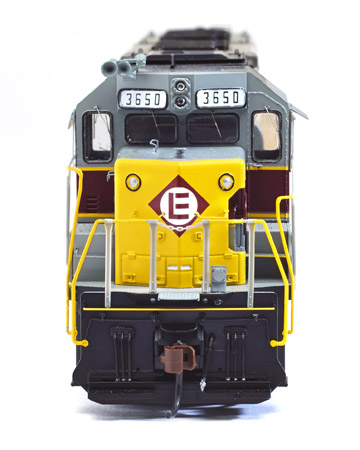
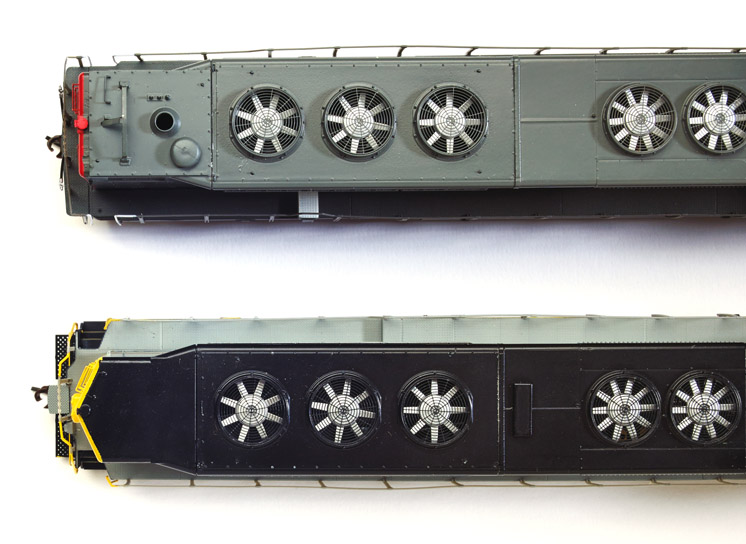
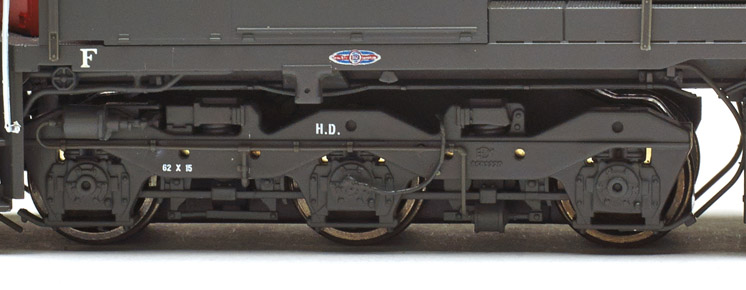
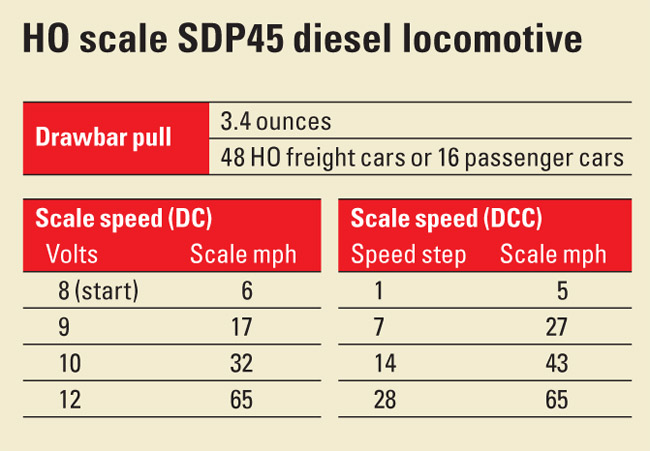

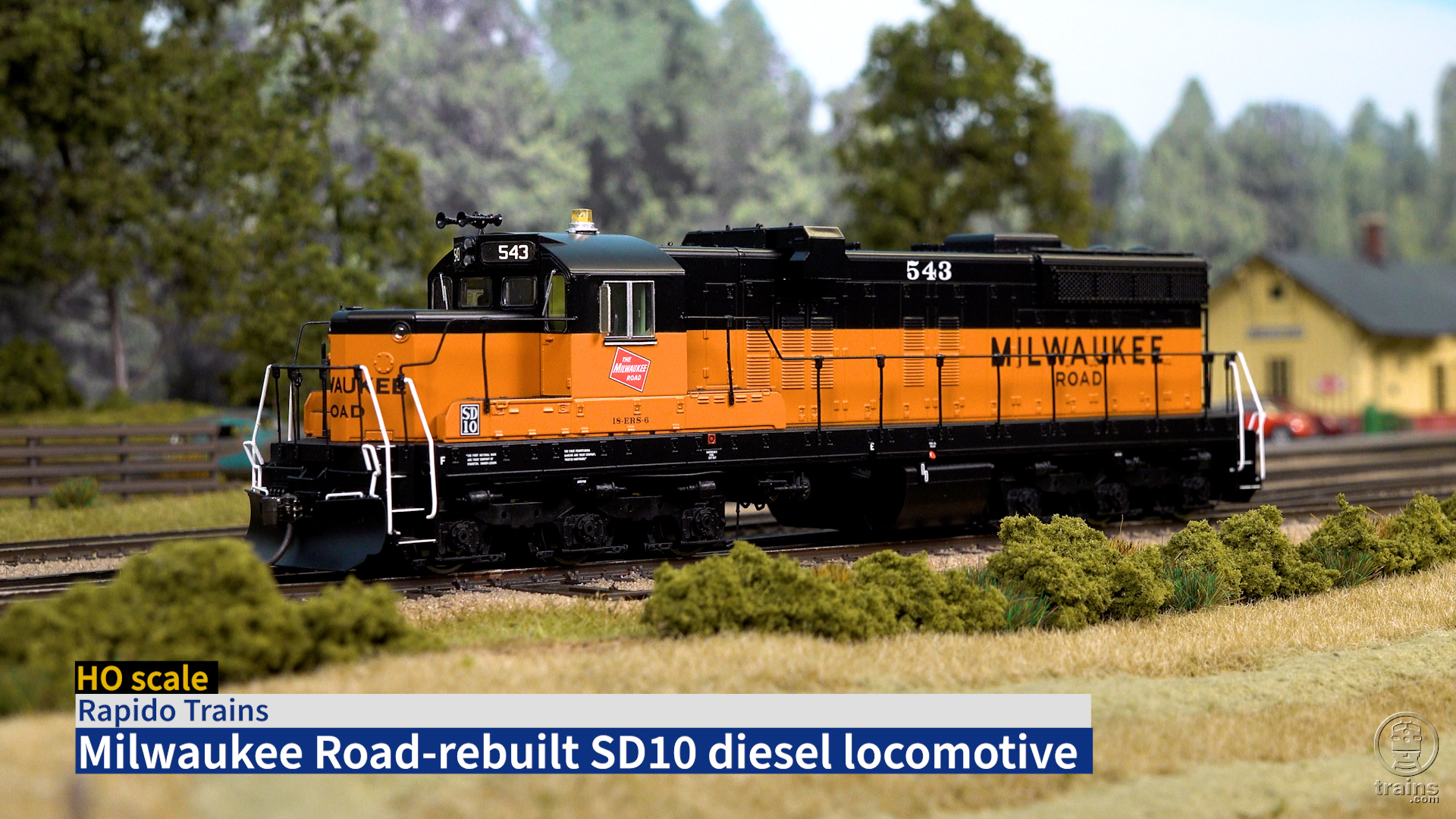
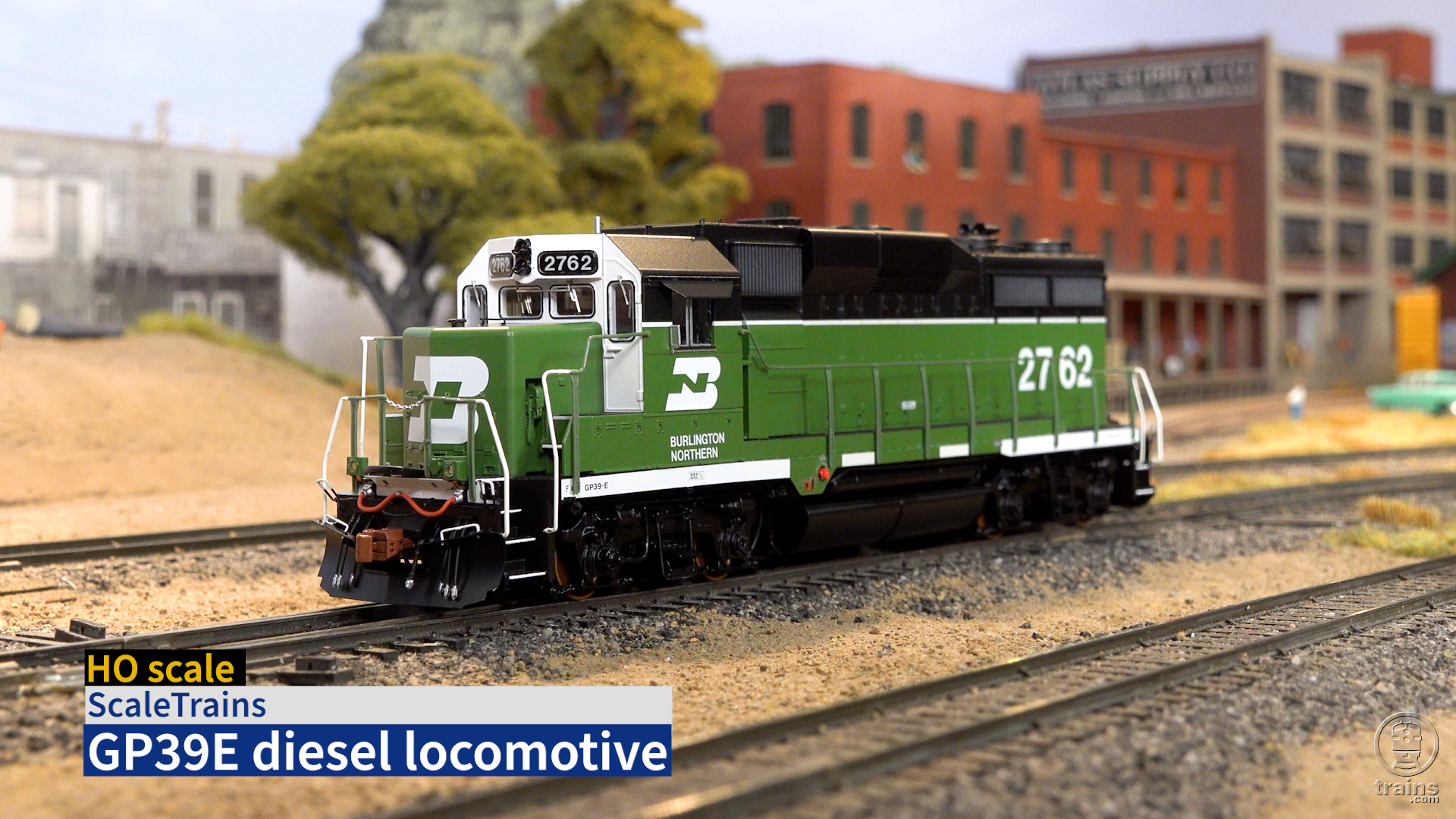
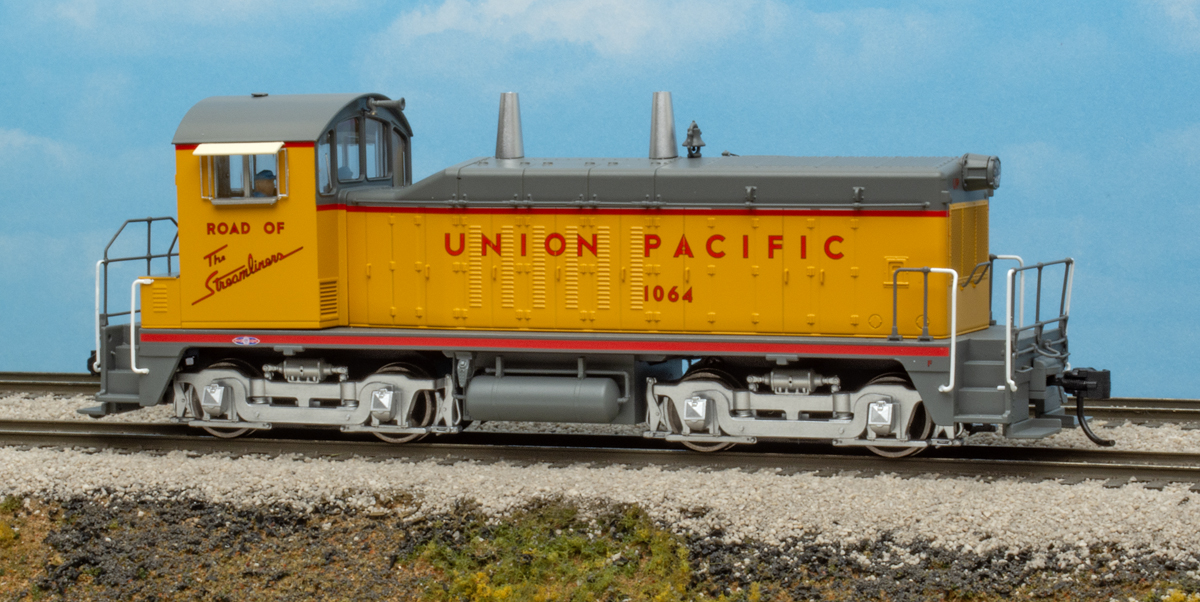
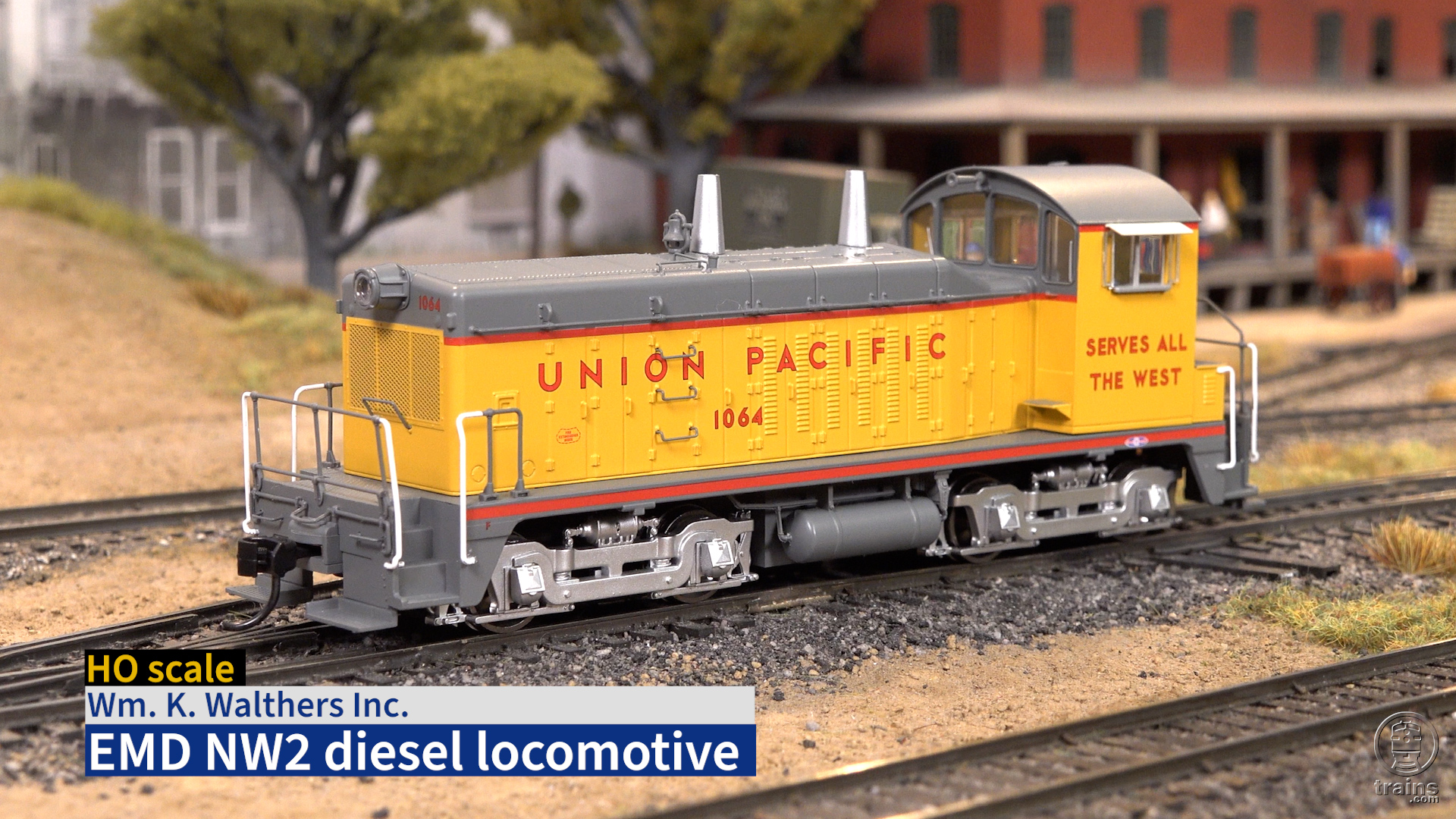




In purchasing two [2] of these loco's in the GN paint with sound, I have to say that 'Athearn' has really out done themselves this time. The level of detail, the sound that comse from the 'Sound Tracs' decoder and the way each unit runs is far superior to anything they done before. Well done guy's.
I picked up a GN version, non-sound type. This is a bootifully done puppy and saved me the kitbashing routine which I was getting ready to do. The smooth running mechanism is really nice. The only issue I had with the humperdill was the wiring harness. After hooking up a Digitrax 165 series decoder, I could not get the beacon to operate. After much head scratching, I found a wire on the harness was bad. Fortunately, I keep extra Genesis harnesses on hand and a quick replacement of the harness solved the issue.
Well done model!!
had to laugh at the look on one of our club member's face when I recently put my SP3209 into yard switcher duty! It performed flawlessly with 20 to 30 car cuts, and the sound was fantastic. John Colley, Sonoma, CA